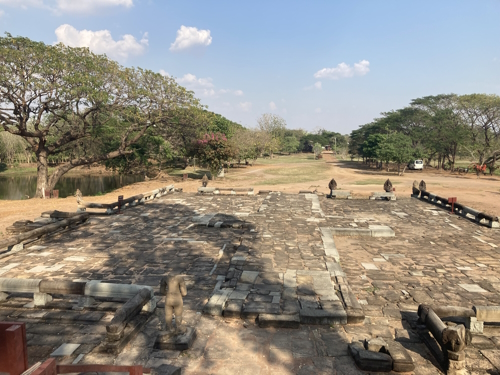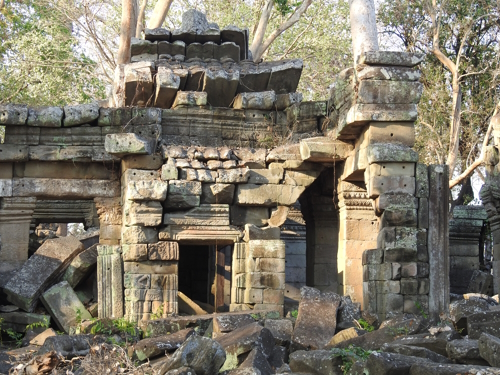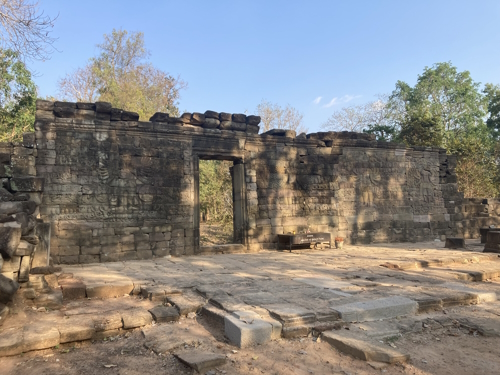Blog TWHS Visits
Banteay Chhmar
Put this one on your to-do list, as Banteay Chhmar may be nominated in the next few years by Cambodia. Serious restorations and improvements of the visiting conditions have taken place, especially since 2017. A lot of money and effort has been put into what is still a remote site not far from the border with Thailand. As with the other Cambodian sites, most of the work is being carried out by local workers and paid for by the Cambodian government. In the earlier stages of its rediscovery and preservation, both the World Monuments Fund and the Global Heritage Fund have been active here as well to mitigate the effects of structural instability and looting.
The Archeological complex of Banteay Chhmar is the focal point of the contemporary town that bears the same name. The ancient site is encircled by a wide moat, still filled with water. The modern town is much smaller and feels like a temporary set-up at its fringes.
My visit to Banteay Chhmar was organized by the local Community-Based Tourism (CBT) group. I stayed overnight in one of their homestays (in a fine room on the second floor of a traditional wooden building) and had lunch and dinner at their CBT clubhouse. A local guide showed me around the archaeological complex. And one of their drivers brought me to the border with Thailand at Poipet the next day. When tourism picks up, the question is how long this CBT structure will continue to exist: it’s a complex system where everyone shares and waits his turn. A ‘regular’ guesthouse has already opened in town. Still, they do a fine job, and communication in English is clear.
The guy that had received me at the CBT headquarters later in the afternoon changed into his official guiding uniform and picked me up from the homestay with his motorbike to go to the site. There were no other tourists present, only a few come. The entrance fee is 5 USD.
Banteay Chhmar was built in the late 12th or early 13th century by King Jayavarman VII, who was also responsible for Angkor Thom. It was a temple complex, constructed to celebrate the Khmer's success in the military campaign against the Champa.
Since this site was last reviewed by Ian in 2010, a lot has changed. The front courtyard has been fully restored thanks to a Cambodian donor. Inside, the grounds are still fully covered by stone rubble - 95% of the buildings had collapsed, but everything has stayed in situ. But no more “you will have to clamber over toppled rocks for pretty much the whole time”: a wooden walkway has been added. From the walkway, you look down into the shrines. One of them sports one of the few face-towers to be found outside of Angkor. Also, the colonnaded galleries are still intact.
It has been a pretty, Angkor-style complex so far, but what comes next is stunning and the site’s Unique Selling Point: the relief carvings on the outer walls. The East Gallery has images of multi-armed Avalokiteshvara Bodhisattvas: one with 32 arms, the others with fewer. Originally there were eight of those, of which six are now back in place. In 2020 two additional carvings were returned from the National Museum in Phnom Penh, carvings that had been looted from the site in 1999. The full gallery walls are currently being restored by anastylosis. Unlike other Khmer sites, the carvings are not only religious in nature but also depict scenes of daily life and of the battle on land and water between the Khmer and Cham. Original bas-reliefs can still be seen on the northern side of the walls.
Els - 19 February 2023


